On most orders
over £50
Got the wrong size? We've got you covered!
Contribute to Sustainability
Just by placing your order, we'll pay for a tree on your behalf
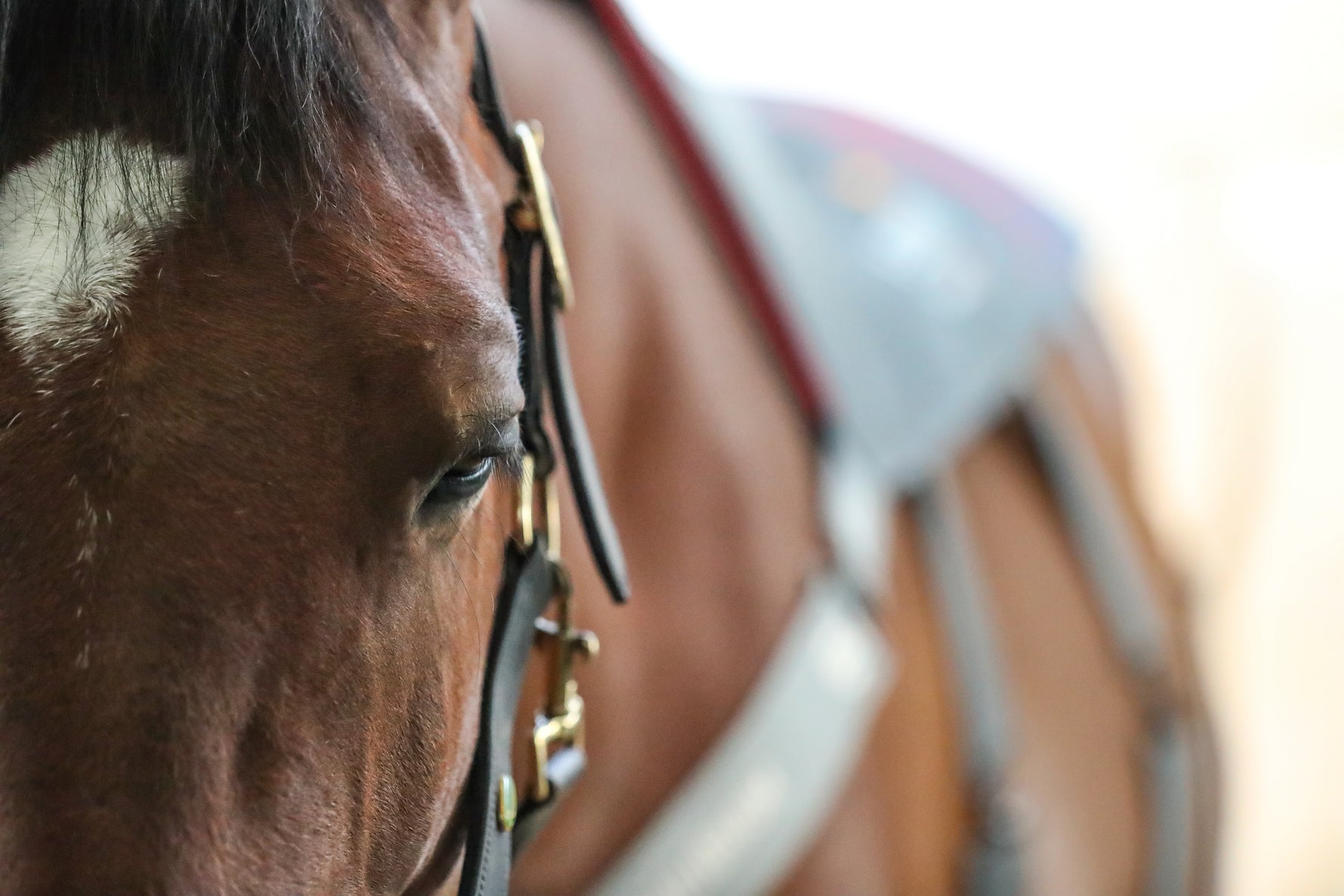
Products That Make a Difference
Tested, trusted and innovative solutions to keep your horse happy and comfortable
Products our Customers Love
-
Our Mission
We're horse owners just like you, and we want to make sure all horses are comfortable and happy. If our horses are happy, we're happy too!
-
Our Story
It all started with one horse, Timmy, who began headshaking as a 5 year old. The outlook was bleak. But our first product, the Muzzle Net, changed this and he went onto have happy life until the grand age of 27. From then on, we drew product inspiration from a variety of horses to build the range we have today.
-
Our Values
We care - your pain points are our pain points and we try to make our products the best they can be to solve these problems.
We seek out knowledge, whether this is through testing and research, or consulting industry experts.
Lastly, we are invested in making the world a better place for our equine friends through raising money for charities and improving our sustainability practices. The possibilities are endless.
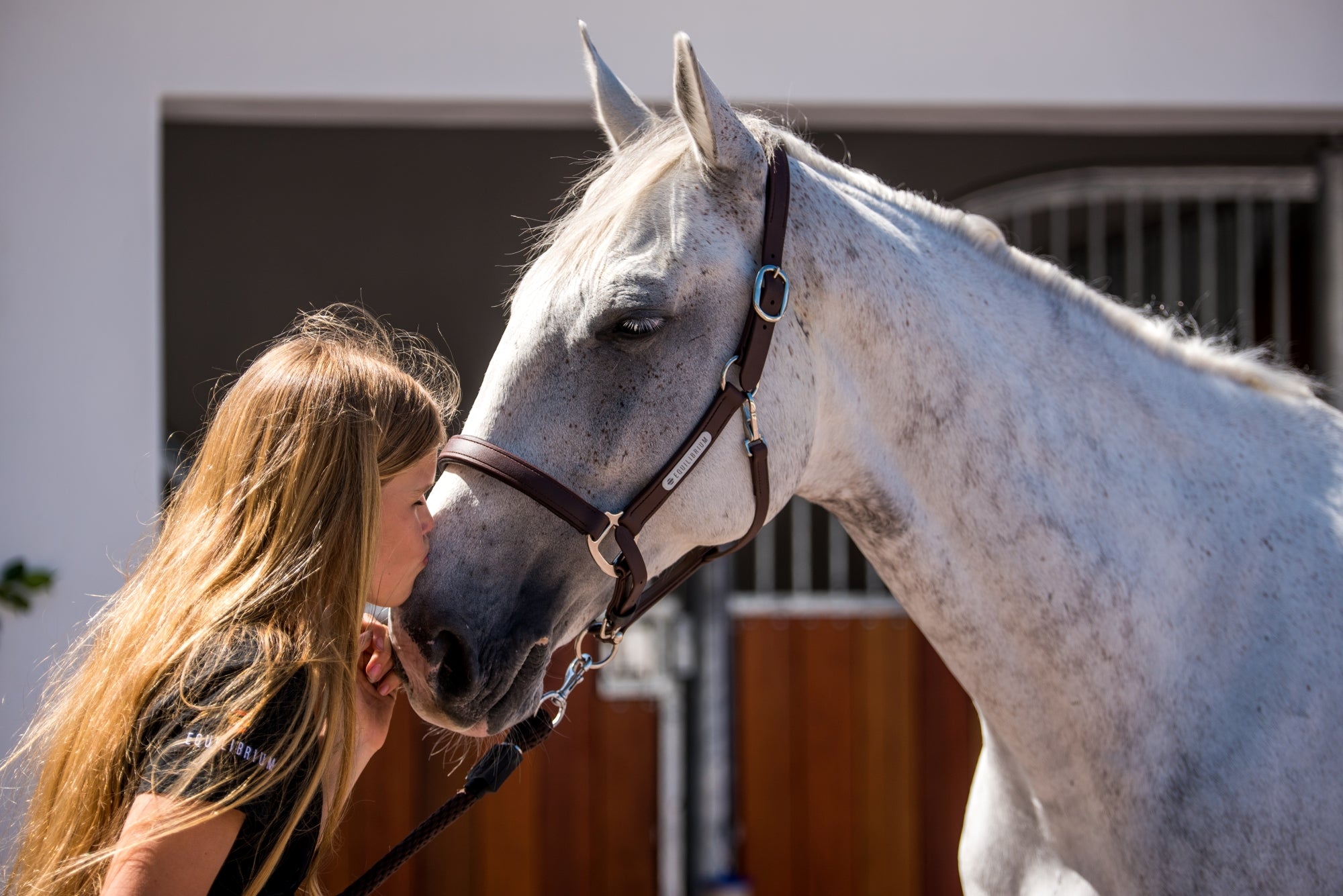
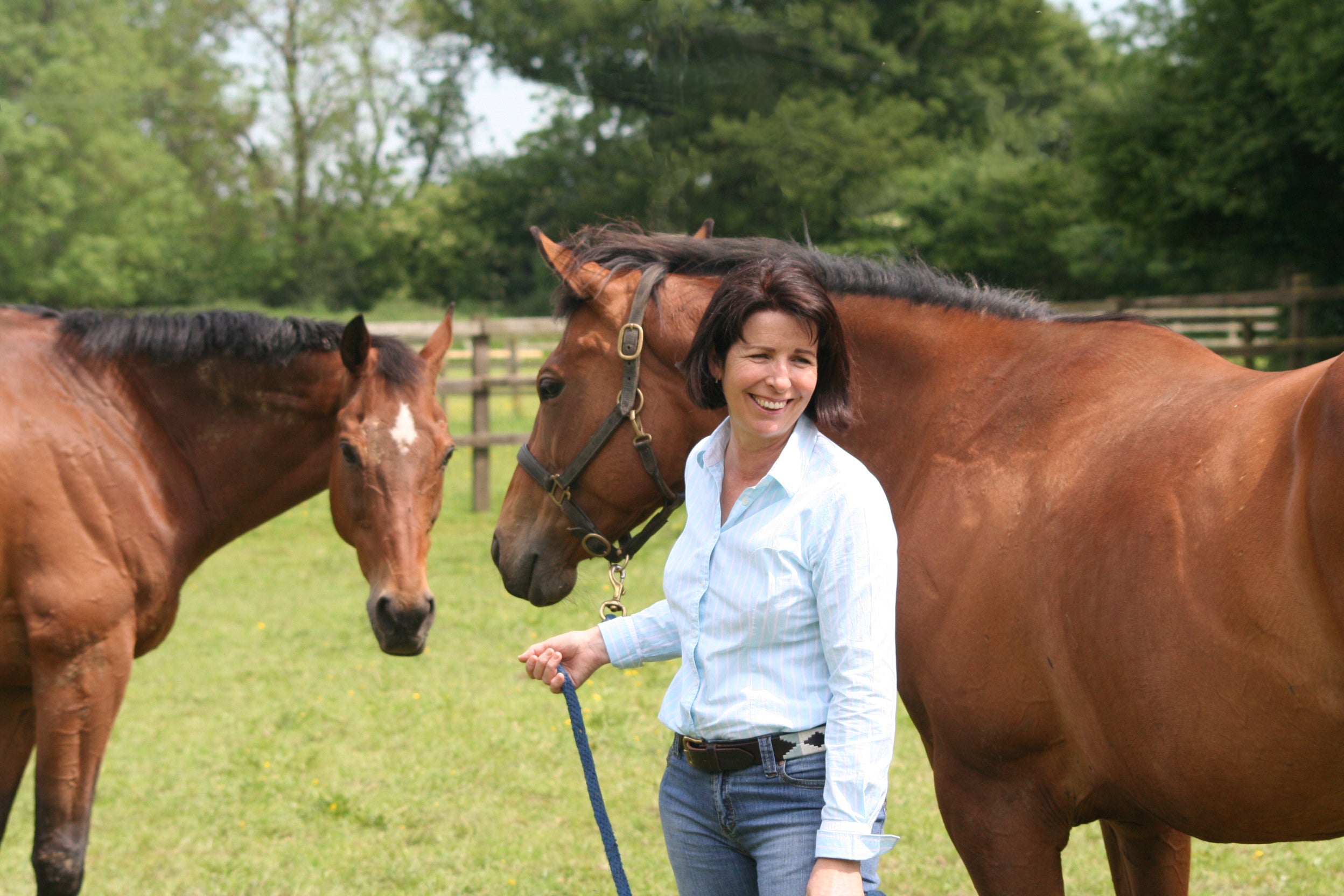
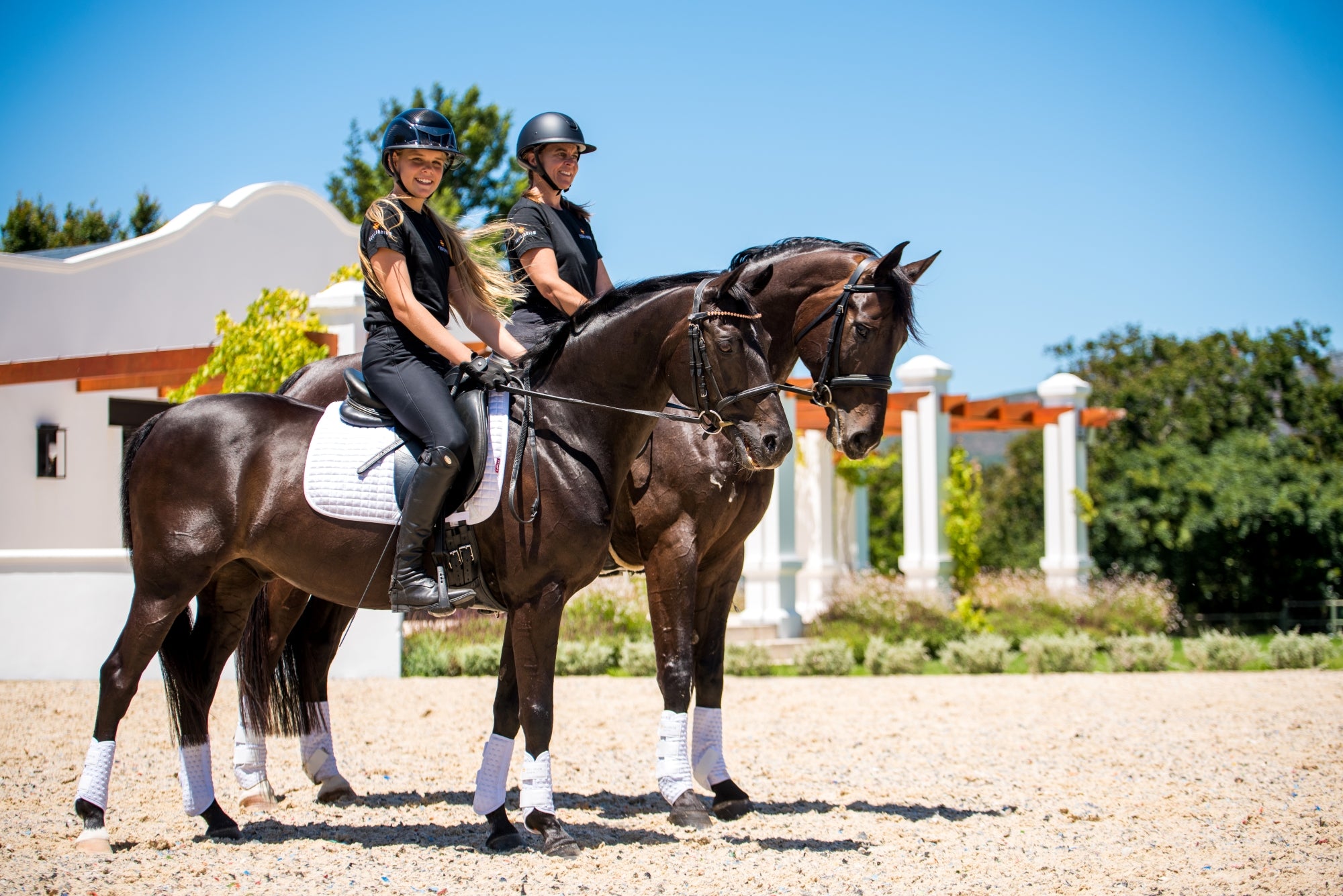
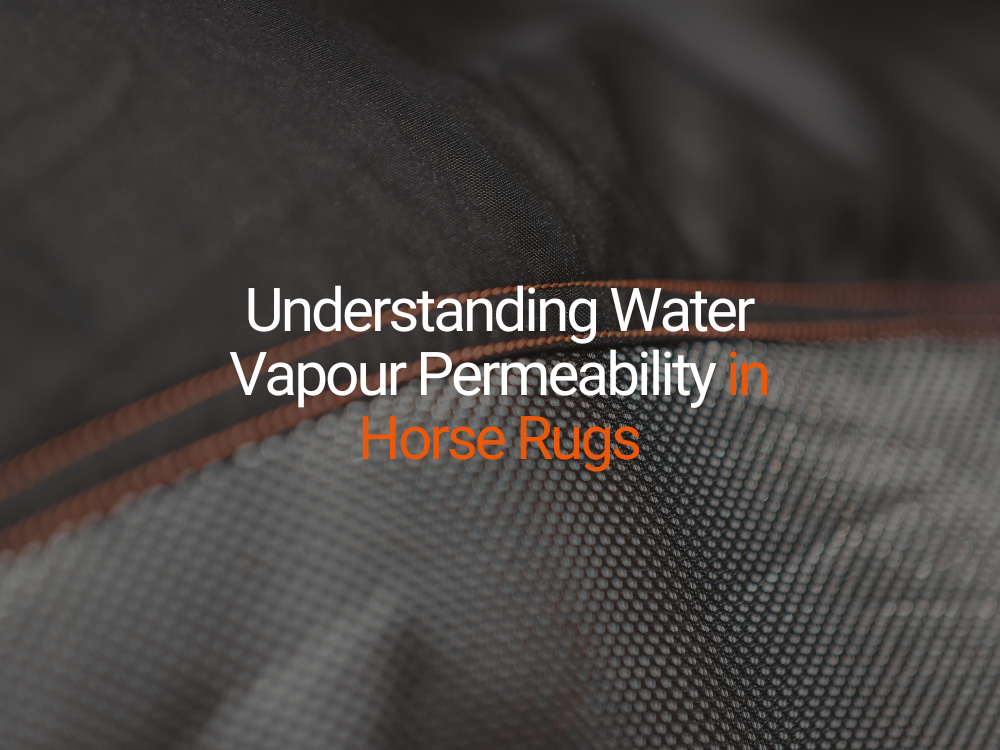
Understanding Water Vapour Permeability in Horse Rugs
When choosing a rug for your horse, comfort is just as important as warmth. One of the key measures of comfort is water vapour permeability – essentially, how well a fabric allows moisture (sweat and natural body vapour) to pass through it.
What is Water Vapour Permeability Testing?
Water vapour permeability (WVP) testing measures how much water vapour can pass through a material over a set period. Results are usually expressed in grams per square metre (g/m²), showing how many grams of vapour pass through one square metre of fabric in 24 hours.A higher number means the material is more breathable, allowing moisture to escape instead of becoming trapped against the horse’s skin.
A Rough Guide to Breathability
While scales can vary between industries, a useful guide for equestrian textiles is:
Under 500 g/m² → Low breathability (suitable for warmth but may trap moisture)
500–1000 g/m² → Moderate breathability (suitable for stable use or rugs worn at rest)
1000+ g/m² → High breathability (ideal for active use or performance wear)
Where Does Our Magnetic Rug Sit on This Scale?
Our Magnetic Rug scored 1166.25 g/m² in WVP testing. This places it in the high breathability range.This means it allows excellent vapour transfer making it suitable for use all year round, helping prevent trapped moisture.
Find out more about the Magnetic Rug here.
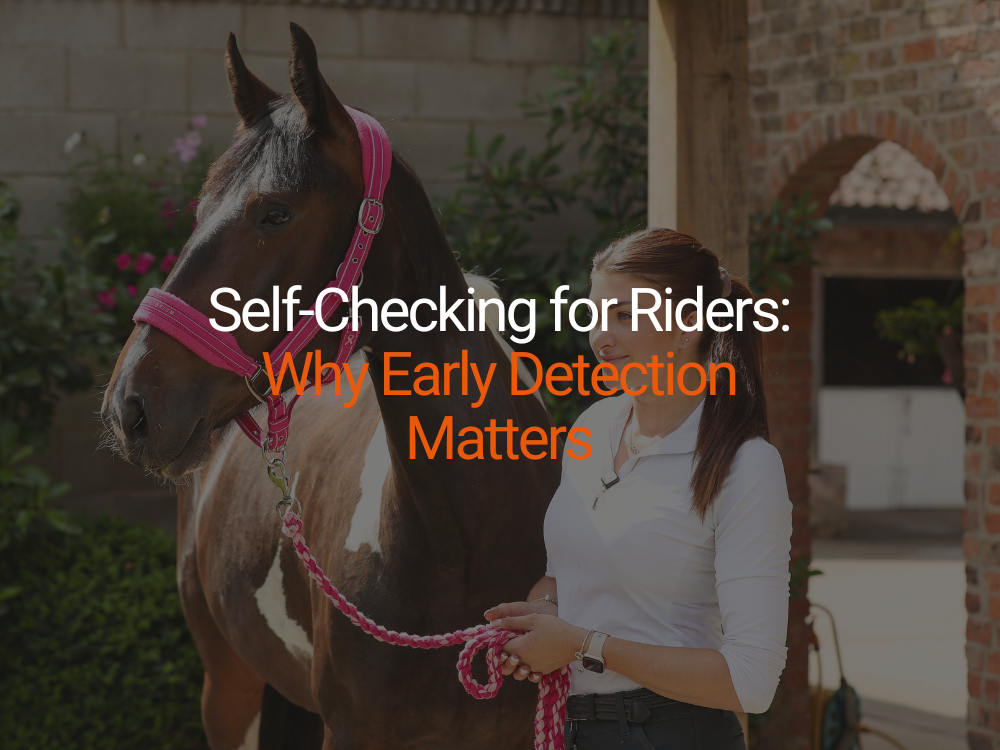
Self-Checking for Riders: Why Early Detection Matters
As horse riders, we’re used to keeping a close eye on our horses — spotting a tiny change in their stride, noticing a slight swelling, or picking up on unusual behaviour. But how often do we pay the same attention to our own bodies?
Breast cancer can affect anyone, regardless of age or lifestyle. The earlier it’s found, the better the chances of successful treatment. That’s why regular self-checks are vital — and why we’re proud to support CoppaFeel!, a charity helping people build the habit of checking regularly. 10% of our Pink All Sports Boots and Pink Stellar Style will be donated towards this vital charity.
Why Early Detection is So Important
Breast cancer is the most common cancer in women in the UK. While many cases are diagnosed after age 50, it can also affect younger people — which is why knowing your normal and spotting changes early could save your life.
When breast cancer is caught early, treatments are often less invasive and survival rates are much higher. That’s why self-checking is one of the most powerful tools you have for protecting your health.
How to Check Yourself: A Step-by-Step Guide
Self-checking doesn’t have to be complicated or time-consuming. It’s about getting to know your body and recognising when something feels different. CoppaFeel! recommends checking at least once a month.
Here’s how:
Look
Stand in front of a mirror with your shoulders straight and arms by your sides.
Look at the shape, size, and outline of your chest.
Raise your arms and check again.
Notice any dimpling, puckering, or skin changes.
Feel
Using the flat part of your fingers, move around your entire breast area, including up to your collarbone, under your armpits, and down to your ribcage.
Check one side at a time.
Apply different pressures: light, medium, and firm.
Notice ChangesBe alert to:
A lump or thickened area
Changes in shape or size
Skin changes (dimpling, rash, redness)
Nipple changes (discharge, inversion)
Constant, unusual pain in the breast or armpit
If you notice anything unusual, don’t panic — most changes aren’t cancer — but do see your GP as soon as possible.
How to Fit Checks Into a Rider’s Lifestyle
We know life with horses is busy — early mornings, late nights, endless yard chores, and little time left over. But fitting in a quick self-check is easier than you think:
Shower routine
Bedtime habit
Making checks part of your horse-care routine ensures you won’t forget — because if you can’t go a day without looking after your horse, you shouldn’t go a month without looking after yourself.
Helpful Resources
CoppaFeel! Self-Check Guidance
CoppaFeel! Text Reminders
NHS Guidance
Final Thought
As equestrians, we’re experts at spotting subtle changes in our horses — now let’s apply that same skill to ourselves. Regular self-checks are quick, simple, and could make all the difference.
This Breast Cancer Awareness season, join us in spreading the word, riding with pride in our limited-edition pink products, and supporting CoppaFeel! with every purchase.
Take care of yourself as well as your horse — because early detection matters.
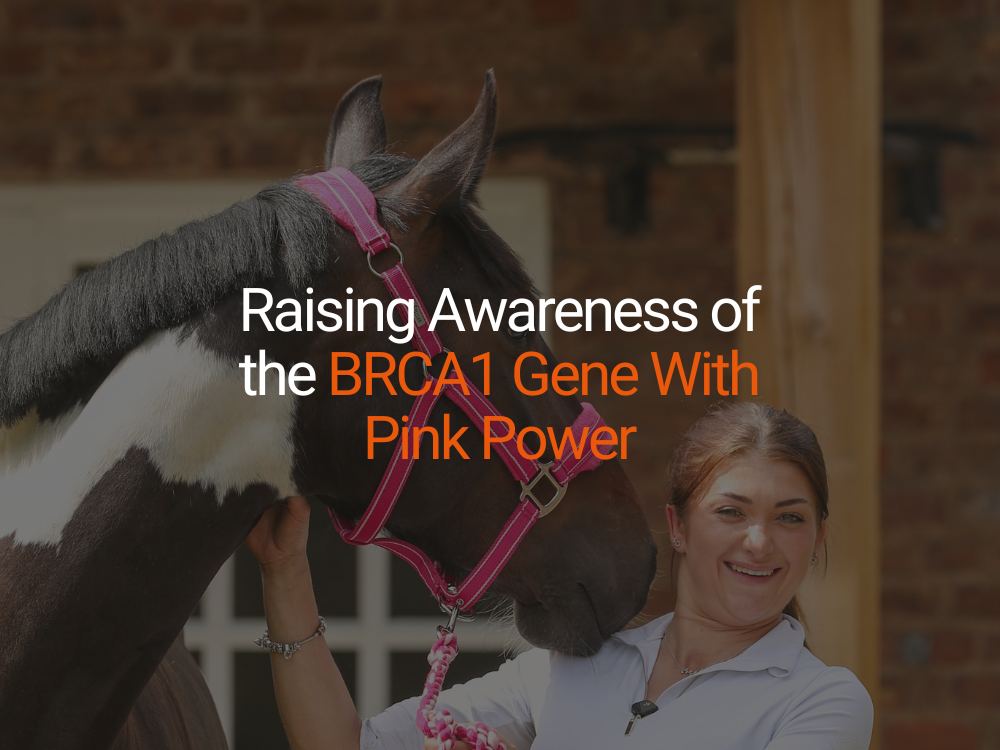
Raising Awareness of the BRCA1 Gene With Pink Power
As horse riders, we know the importance of resilience, preparation, and looking after ourselves and our horses. But sometimes, the biggest challenges aren’t on the cross-country course or in the show ring — they’re in our own health. This Breast Cancer Awareness season, we’re proud to support CoppaFeel!, a charity dedicated to raising awareness of breast cancer in young people, by donating 10% of profits from our limited-edition pink products, the Tri-Zone All Sports Boots and Stellar Style.
Alongside this, we’re working with equestrian influencer Phoebe Scholtens, who bravely shared her personal story of being diagnosed with a BRCA1 gene mutation. After undergoing a preventative double mastectomy and reconstruction, Phoebe is now passionate about spreading awareness of this gene mutation and encouraging others to take action.
Let’s take a closer look at what the BRCA1 gene is, why it matters, and how you can protect yourself and your loved ones.
What is the BRCA1 Gene Mutation?
Everyone has BRCA1 and BRCA2 genes. Their job is to help repair DNA damage and keep cells healthy. But when there is a mutation (a change) in these genes, it increases the risk of developing certain cancers — particularly breast and ovarian cancer.
A BRCA1 mutation doesn’t mean cancer is inevitable, but it does mean your risk is significantly higher than the general population. That’s why awareness and early action are vital.
Why is it Important?
Knowing your genetic risk gives you the power to make informed choices. For women, a BRCA1 mutation can mean:
55 to 72 percent of women with a pathogenic BRCA1 mutation will develop breast cancer in their lifetime (https://www.bcrf.org/about-breast-cancer/brca1/)
Other sources say 65 to 79 of them will develop breast cancer before the age of 80 (https://www.macmillan.org.uk/cancer-information-and-support/worried-about-cancer/causes-and-risk-factors/brca1-and-cancer-risks-for-women)
36 to 53 of women with this gene mutation will develop ovarian cancer before the age of 80. (https://www.macmillan.org.uk/cancer-information-and-support/worried-about-cancer/causes-and-risk-factors/brca1-and-cancer-risks-for-women)
There are also increased chances of developing cancer at a younger age
For men, BRCA1 mutations also slightly raise the risk of breast cancer and prostate cancer.
Because BRCA1-associated breast cancers tend to develop earlier and sometimes present in more aggressive forms, early awareness and action can make a real difference. Understanding your genetic status can help you take preventive steps and be proactive about your health.
How to Get Diagnosed
Testing for BRCA mutations is usually offered if:
You have a strong family history of breast, ovarian, or prostate cancer
A close relative has already tested positive for the mutation
You or a family member were diagnosed with cancer at a young age
The process typically starts with a GP appointment. You may be referred for genetic counselling, where you’ll discuss your family history and whether testing is right for you.
Genetic testing for BRCA1 (and BRCA2) is typically done via a blood or saliva sample.
It’s important to approach testing with support — emotional, medical, and sometimes familial — because results can impact you and relative.
What Can Be Done if You’re Diagnosed?
Receiving a positive BRCA1 test result can feel overwhelming, but it is not a diagnosis of cancer — it is a call to proactive decision-making. These are the main strategies usually considered:
Enhanced screening: Regular breast MRI or mammograms starting earlier than usual. Ovarian cancer screening/ultrasounds and monitoring.
Preventive surgery: Options such as mastectomy or removal of ovaries to reduce risk.
Medication: Some treatments can lower the risk of developing breast cancer.
Lifestyle choices: While genetics is non-modifiable, factors like maintaining healthy weight, limiting alcohol, staying active, balanced diet, and avoiding smoking can support overall risk reduction and well-being.
Everyone’s journey is different. Phoebe chose to undergo a double mastectomy and reconstruction to reduce her risk — a decision made with strength, courage, and foresight.
Phoebe’s Story
Phoebe Scholtens, an inspiring equestrian influencer, discovered she carried the BRCA1 gene mutation. Facing the risks head-on, she made the bold choice to have a preventative double mastectomy and reconstruction. Her story highlights the importance of awareness, early testing, and taking control of your future health.
By sharing her journey, Phoebe is helping riders and non-riders alike recognise the power of self-advocacy.
How You Can Help
This October and beyond, you can support the cause by choosing from our limited-edition pink products — including the Pink Stellar Style Headcollar. Not only will you look stylish in the saddle, but 10% of profits will go directly to CoppaFeel!, helping fund life-saving awareness campaigns.
If you have a family history of cancer or any concerns, speak to your GP. And don’t forget: regular self-checks are key, no matter your age.
Let’s ride forward with courage, in style, and in pink — for awareness, for support, and for the future.
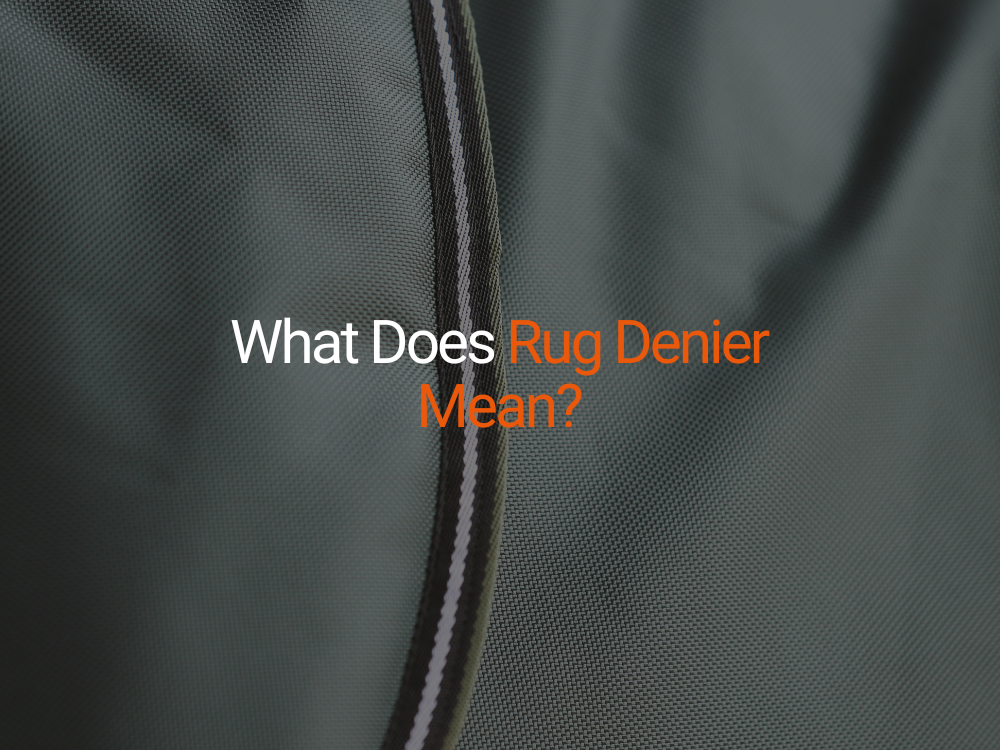
What Does Rug Denier Mean? Understanding Turnout Rug Toughness
If you’ve ever shopped for a horse rug—especially a turnout rug—you’ve likely come across the word “denier”. But what exactly does it mean, and why is it important when choosing protection for your horse?In this guide, we’ll break down what rug denier is, how it affects durability and performance, and why choosing the right denier matters more than you might think—especially if your horse is turned out daily, loves to roll, or is a known rug-wrecker.
What Is Rug Denier?
Denier (D) is a measure of the thickness (or density) of the individual yarns used to weave a fabric. Technically, it refers to the weight in grams of 9,000 metres of the fibre used.- A higher denier means thicker threads → stronger, more durable fabric- A lower denier means finer threads → lighter fabricIn horse rugs, denier usually refers to the outer shell fabric—typically made of polyester or nylon—which is responsible for the rug’s tear strength, abrasion resistance, and overall toughness.
Why Is Denier Important in Turnout Rugs?
Turnout rugs are exposed to a lot—weather, mud, rubbing, biting, rolling, and rough play. The denier rating of the outer fabric plays a huge role in how well your rug holds up.1. Durability & Tear ResistanceA higher denier offers greater resistance to rips and punctures. The new Equilibrium Endure Turnout Rug uses a strong 1680D outer, making it one of the most durable rugs on the market.2. Weather ProtectionHigh-denier rugs also offer better wind and water resistance. Thicker fabrics naturally repel weather better, and they hold up more effectively against prolonged rain and harsh winter conditions.3. LongevityInvesting in a higher-denier rug may cost more upfront, but it pays off in the long run. With tougher yarn you should be dealing with far less repairs, and in the unfortunate event where your horse does manage to rip it the damage is often more contained and easier to patch, saving you time and money.
Which Denier Is Right for Your Horse?
Here’s a quick guide to help you match denier to your horse’s needs:
Denier Rating
Best For
600D–840D
Calm horses, dry climates, or occasional turnout
1200D
Regular turnout in normal weather conditions
1680D+
Playful, or destructive horses; prolonged rain and wind, those who feel the cold
When choosing a turnout rug, rug denier shouldn’t be overlooked. It’s one of the clearest indicators of how long your rug will last, how well it’ll protect your horse from the elements, and how much hassle it will (or won’t) give you mid-season.
If you're looking for:- Exceptional durability- Strong weather protection- A reliable option for all-day turnout…then the Endure Turnout Rug with 1680D outer is built to exceed expectations—season after season.
Shop the Endure Turnout Rug
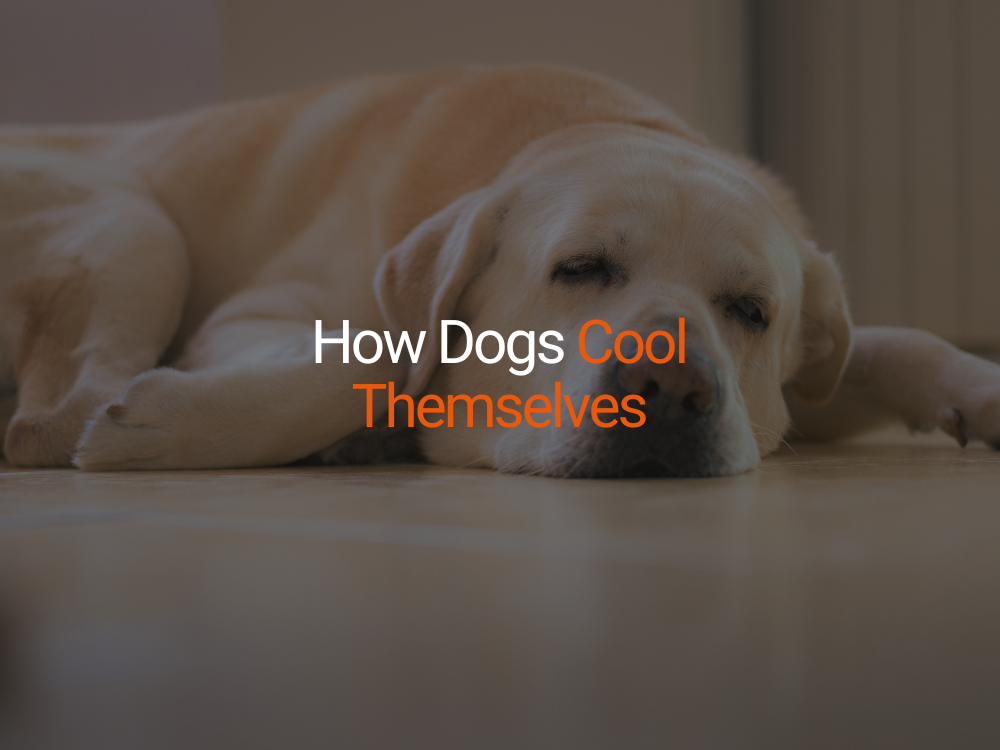
How Dogs Cool Themselves: Understanding Canine Thermoregulation
Dogs are incredibly adaptable animals, but they’re not as efficient at cooling themselves as humans. Without the ability to sweat over most of their body, dogs rely on a unique thermoregulatory system to maintain a healthy internal temperature. In this post, we explore how dogs cool down naturally, why it matters, and how products like cooling coats can support their biological processes—especially during summer.
What Is Canine Thermoregulation?
Thermoregulation is the body's ability to maintain a stable internal temperature despite external conditions. In dogs, the normal resting body temperature ranges between 38.3°C and 39.2°C. When temperatures rise or a dog becomes active, their body initiates mechanisms to release excess heat.
But unlike humans, dogs have limited sweat glands—mostly located in their paw pads and nose. This makes other cooling strategies essential for them to stay safe and comfortable.
How Do Dogs Cool Themselves?
Dogs primarily rely on panting to cool down. Here’s how their thermoregulation works:
1. Panting
Panting increases airflow across moist surfaces in the mouth, tongue, and upper respiratory tract, facilitating evaporative cooling. As moisture evaporates, it draws heat away from the body.
📌 Research published in The Journal of Thermal Biology confirms that panting plays a key role in evaporative heat loss in dogs, especially during moderate to high levels of exertion (King et al., 2004).
2. Vasodilation
Blood vessels near the skin surface widen to help dissipate heat. This is especially noticeable in the ears and face. More warm blood is moved toward the surface, where it can release heat more effectively.
3. Conduction
Lying on cool surfaces allows the body to release heat through direct contact. This is why dogs often lie on tiles or shade during hot weather.
4. Limited Sweating
Though minimal, dogs can sweat through their paw pads. You'll often notice damp paw prints on warm surfaces when a dog is overheated.
Why Dogs Struggle in the Heat
Because panting and paw-pad sweating are less efficient than full-body sweating, dogs can overheat quickly—especially in humid environments or enclosed spaces like cars.
Some breeds are especially vulnerable:
Flat-faced (brachycephalic) breeds like Bulldogs, Pugs, and Shih Tzus
Thick-coated dogs like Huskies or Chows
Older dogs, puppies, and dogs with health conditions
A study published in Scientific Reports (O'Neill et al., 2020) found that brachycephalic breeds are significantly more prone to heat-related illness, due to restricted airways that limit effective panting.
Supporting Your Dog’s Cooling System
While natural thermoregulation does work, it's not always enough—particularly during summer heatwaves, travel, or exercise. That’s where cooling aids come in.
💡 Product Tip: How Cooling Coats Help Dogs Stay Cooler
The Quick Chill Cooling Coat supports your dog’s natural cooling process by:
Enhancing evaporative cooling without soaking your dog’s fur
Drawing heat away from the body through water-activated fabric
Reducing the need for excessive panting
Aiding thermoregulation during travel, walks, or hot days at home
📖 A 2020 study in Animals found that dogs wearing evaporative cooling coats had lower post-exercise body temperatures and recovered faster after exertion in warm weather (Zanghi et al., 2020).
Please note: If your dog has suspected heatstroke, please call the vet. Do not use a cooling coat. Read more on heatstroke here.
Everyday Tips to Support Thermoregulation
Ensure constant access to fresh, cool water
Walk early or late—never during peak heat
Provide shade and ventilation at home and during travel
Allow your dog to lie on cool surfaces
Use a cooling coat during rest or light activity. Reactivate the coat as many times as needed.
Understanding how dogs cool down helps you make informed choices to keep them safe. While panting and paw pad sweating are their primary defences, dogs often need additional support—especially in summer.
References
King, D., and Taylor, R. “Evaporative heat loss in exercising dogs.” Journal of Thermal Biology, 2004.
O'Neill, D.G., Hall, E.J., et al. “Dogs don’t die just in hot cars—exposure to hot weather is just as deadly.” Scientific Reports, 2020. https://www.nature.com/articles/s41598-020-66015-8
Zanghi, B.M. et al. “Effect of a Cooling Vest on Core Temperature in Dogs Exercising in the Heat.” Animals, MDPI, 2020. https://www.mdpi.com/2076-2615/10/4/722
RSPCA. “Keeping your dog cool in hot weather.” https://www.rspca.org.uk
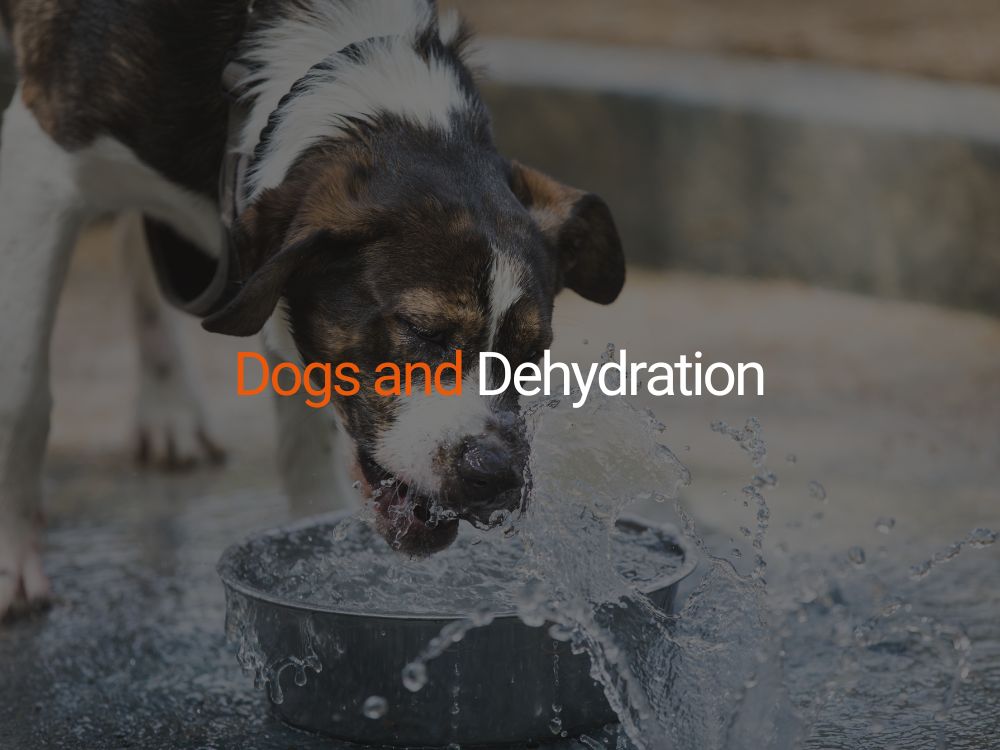
Dogs and Dehydration: Signs, Prevention & When to Worry
Hydration is essential to every aspect of a dog’s health—but during the warmer months, the risk of dehydration in dogs increases significantly. Whether it’s due to heat, overexertion, or simply not drinking enough water, dehydration can quickly become dangerous if not caught early. In this guide, we cover the signs of dehydration in dogs, how to prevent it, and what to do when your dog shows symptoms.
Why Is Hydration So Important for Dogs?
Water plays a vital role in maintaining your dog’s circulation, digestion, temperature regulation, and joint health. Even mild dehydration can affect your dog’s energy levels and lead to complications like heatstroke.
Dogs don’t sweat like humans. Instead, they pant and release small amounts of moisture through their paws, making them less efficient at cooling themselves. In hot weather or during travel, this can lead to rapid water loss—especially if not replenished.
Common Signs of Dehydration in Dogs
If your dog shows any of the following symptoms, they may be dehydrated:
Dry or sticky gums
Lethargy or weakness
Excessive panting
Sunken eyes
Dry nose
Loss of skin elasticity
Reduced appetite
Dark yellow urine or less frequent urination
A 2014 study published in Veterinary Medicine and Science confirmed that loss of skin elasticity and dry mucous membranes are two of the most reliable clinical indicators of dehydration in dogs (DiBartola et al., 2014).
When to Worry: Mild vs. Severe Dehydration
Mild dehydration may present as subtle changes in behaviour and appearance, but moderate to severe dehydration can cause collapse, kidney damage, or even death.
Seek immediate veterinary help if your dog:
Refuses to drink
Shows signs of collapse or confusion
Has been vomiting or has diarrhoea for more than 24 hours
Is panting heavily in a hot environment with dry gums or weakness
How to Keep Your Dog Hydrated in Summer
Here are proactive ways to ensure your dog stays hydrated—especially when temperatures rise:
1. Offer Fresh, Cool Water Constantly
Place bowls in multiple areas—especially outdoors or in warm rooms. Change the water frequently and add ice cubes to keep it cool and enticing.
2. Hydrating Foods Help
Feed high-moisture foods like wet dog food or fresh fruit/vegetables that are safe for dogs.
3. Avoid Overexertion in the Heat
Plan walks and exercise during early morning or evening and take breaks in shady spots.
4. Use Cooling Aids
While not a direct source of hydration, cooling coats support thermoregulation and could help in reducing the amount of fluid your dog expels through panting.
Product Tip: Quick Chill Cooling Coat
The Quick Chill Cooling Coat is a practical way to manage your dog’s body temperature and complement hydration efforts.
Water-activated and reusable
Ideal for walks, travel, or relaxing at home
Does not soak your dog or create mess—just cool, calm relief
Special Considerations: Who’s Most at Risk?
Some dogs are more prone to dehydration, especially in summer:
Senior dogs
Puppies
Flat-faced (brachycephalic) breeds like Bulldogs and Pugs
Dogs with kidney issues or chronic illness
Highly active or working dogs
Dogs fed primarily dry kibble without added moisture
Dehydration can creep up fast in the summer—but with vigilance, it’s entirely preventable. Make hydration a habit by providing access to fresh water, avoiding high heat exposure, and using smart tools like the Quick Chill Cooling Coat to support your dog’s ability to stay cool and well-regulated.
References
DiBartola SP, Bateman SW, et al. “Evaluation of hydration status in dogs: correlation of physical examination and laboratory parameters.” Veterinary Medicine and Science, 2014.
Zanghi, BM. “The effects of dietary hydration on thermoregulation and activity in dogs.” Journal of Animal Science, 2013.
RSPCA. “Keeping pets cool in hot weather.” https://www.rspca.org.uk
ASPCA. “Water Safety Tips for Dogs.” https://www.aspca.org
The innovative approach of Equilibrium Products, maintains their range at the forefront of equestrian care and performance. That’s why they’re our first choice to help our horses stay in top form.

Team Bragg Eventing
International Event Rider
All aspects of dealing with Equilibrium have been excellent. Superb customer service care, fantastic delivery service and the back massage is a superb product that my horses love. Thank you Equilibrium
Freya Wright
Feefo Verified Customer
Amazing customer service!
The were very informative and helpful. The delivery was very quick with lots of updates which I love. Would recommend to anyone!
Emily Chambers
Feefo Verified Customer
A very impressed customer!
Lovely products, quick delivery services and very helpful customer service. The products are very thought about and have the horses best interests at heart.
Jodie Coombes
Feefo Verified Customer













